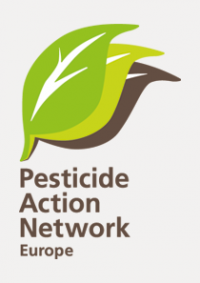The Rapid Rise of TFA Contamination Across the EU
This report presents an investigation into trifluoroacetic acid (TFA) contamination in wine carried out across ten European wine-producing EU countries by members of the European Pesticide Action Network Europe (PAN Europe). Our findings reveal an alarming and rapidly intensifying environmental issue that has remained unnoticed for too long by the public and policymakers alike.
TFA is a highly persistent breakdown product of certain fluorinated chemicals, especially Fgases and PFAS pesticides, which are respectively used in refrigeration and increasingly in agriculture. Once released, TFA cannot be broken down by natural processes and therefore inevitably accumulates in water, soil, plants, and even in human blood. Previous studies by the NGOs show TFA contamination is widespread in Europe’s rivers, lakes, groundwater, tap water, and even rain. This report takes a crucial next step by examining the extent to which TFA also accumulates in agricultural products, specifically wine. TFA was long thought to be a toxicological ‘non-relevant’ pesticide metabolite. Now it is suspected to be toxic to reproduction.
Key findings:
- A steep rise in contamination: we see an exponential rise in TFA levels in wine since 2010. TFA was not detected in wines from before 1988, while wines from 2021–2024 show average levels of 122 µg/L, with some peaks of over 300 µg/L.
- Ubiquity across Europe: Wines from 10 EU countries were analysed. While average TFA levels varied, wines from all countries showed levels of TFA several orders of magnitude higher than the already high background levels in water; Austrian wines were particularly affected.
- Co-occurrence with pesticide residues: Wines with higher levels of TFA also contained a greater number and quantity of synthetic pesticide residues.
These results align with previous findings that PFAS pesticides are the primary source of TFA contamination in agriculture and food chains. Due to the chemical structure of these substances, their degradation into TFA is practically unavoidable under real-world conditions. The data also support as-yet-unpublished findings by a researcher at the University of Freiburg and mirror trends previously observed in official EU studies. Taken together, the evidence paints a clear picture: TFA contamination in food is real, and it is increasing.
Given the irreversible nature of TFA and the absence of viable removal technologies, the authors call for:
- An immediate ban on PFAS pesticides and F-gases;
- A comprehensive monitoring programme for TFA in food products;
- A precautionary regulatory approach that acknowledges the significant toxicological data gaps and potential risks to public health, including children.
TFA is a forever chemical. Every year of inaction further compounds its legacy in our ecosystems and food supply.
